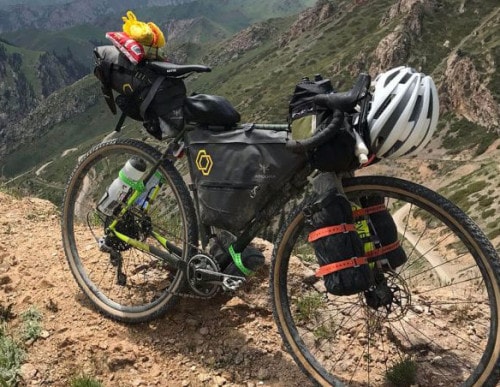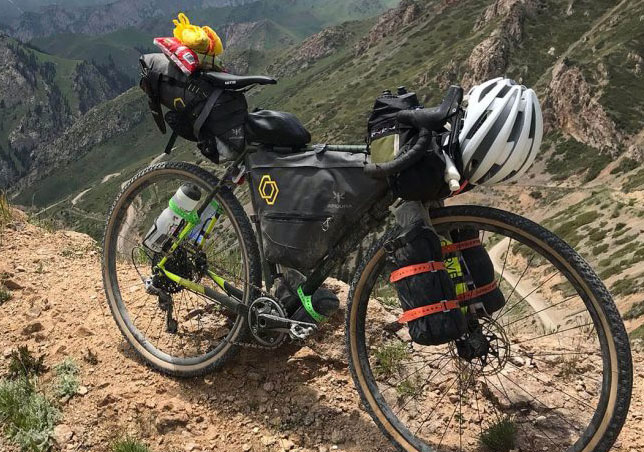Bike packing has become a mainstream discipline of cycling in recent years, it has also become a new entry point for people joining the sport of cycling. Not a huge amount of gear is required and for most beginners strapping a bag to your road bike can be all you need for your first bike packing trip. In this blog post I’ll introduce training for bikepacking and leave with you a few ideas to help you prepare for your next trip into the wild.
Demands of bike packing
In a typical day of bike packing you can expect to be spending long periods of time in your endurance zone. You’ll likely have a few brief forays into your tempo and threshold zones. This will likely be in the case of a headwind or a climb. This style of riding is different to the typical training or racing that is mostly talked about. Think about racing your local crit or an NRS stage race. The event will require a significant amount of time at or above your threshold. To prepare adequately for this type of event targeted and structured training needs to be completed at the higher end of the intensity zones. In the case of bikepacking, one should be actively trying to refrain from letting the intensity creep up in order to keep the legs fresh. Understanding our bikepacking pace and spending time focusing our training on this will help the bike packer on their travels.

Training
You might assume that you don’t need to worry about training for bike packing. It’s just riding isn’t it? However there are some simple ways to prepare and make the whole experience easier and far more enjoyable. When done well bike packing should be a balance of suffering and enjoying the sights of unfamiliar roads. Having a general amount of aerobic condition is important and will help to manage the long days in the saddle. However the repeated delving into the higher zones will be the real undoing of the legs. Building our tolerance of these zones is key, particularly when backing up for a second day.

Long endurance training rides are fundamental to building our capacity to ride for a long period of time. They condition our aerobic system to tolerate the sustained exercise. These training rides require us to hold back and not go too hard, something we are almost always guilty of. Focusing on those moments where we delve into the higher power zones I’ll introduce a tempo zone session. A tempo style session is going to have significant benefit for bikepacking. When we train in the tempo intensity zone we really develop the aerobic engine, we are increasing the size and quantity of the mitochondria in the muscle cells. These are effectively the engine room of the muscle and will better equip you to tolerate a long day with plenty of climbing. Secondly, tempo zone training works to build our metabolic efficiency increasing our bodies reliance on it’s own fat stores as a fuel source. Our muscular strength on the bike is also greatly improved through this training. Don’t get bogged down in all of the jargon, a simple analogy is that of a motor vehicle. Think of a small two door petrol sedan, by training in your tempo zone you’re working to upgrade to a bigger Diesel engine. The big Diesel engine will last a long time, is reliable, and is very efficient compared to the smaller petrol car. You’d much rather drive the big diesel across Australia.
An example tempo session could be as follows:
Warm up:
- 10 min warm up
Main set:
- 20 mins @ endurance
- 2 x 10 mins @tempo, 5 mins rest between efforts
Cool Down:
- 10 mins cool down
The intervals will require concentration and real focus to complete. They can be done on your commute, on a turbo trainer, or the TT bike.
If you’re not familiar with power zones the tempo zone is between 76-90% of your FTP and about 3-4 RPE.
*This is a suggestion and for some folks you may need to increase or decrease the length of the effort depending on the fitness. Feel free to reach out with any questions!
Important things to remember
Consider your route planning, there’s no point selecting a route that is going to be above your fitness and ability. If you’re putting in the effort to get your leave pass you want this trip to be fun! Consider the extra weight you’re carrying on your bike. This could be up to 10kg depending on the conditions. The usual 100km ride for you is going to feel a little different, particularly if you’re planning on riding a hilly route. Trialling your setup including the added weight on your commute or regular training rides is a great way to work out your expected speed and better plan your trip.
If you’d like to know more about training for bikepacking please drop me an email: [email protected]




